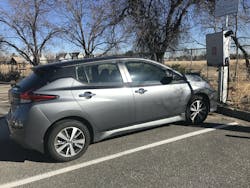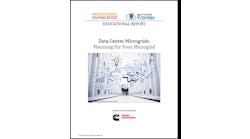Electric vehicles (EVs) could become important microgrid assets that reap income by providing grid services. But there’s a glitch — a lack of market signals from the grid in many places.
However, a growing number of cities and other organizations are pairing EVs and vehicle-to-grid programs with microgrids to test the idea, expecting to reap not only savings and income but also environmental justice and sustainability.
They are eyeing ways to take advantage of the batteries in EVs — which often sit unused in parking lots or garages — with the expectation of EV proliferation in the coming years, and the growing availability of bidirectional technology, which allows the car battery to discharge back onto the grid.
Peak Power, which provides software to manage distributed energy resources (DERs), is participating in an EV and microgrid project in Ontario focusing on the importance of establishing markets for multiple grid services.
“It all comes down to coordination among stakeholders. Allowing DERs to participate in the grid is a win for everyone. Markets are the best way to make that happen,” said Mabel Fulford, senior manager of strategy and operations, vehicle-grid integration for Peak Power.
Missing markets in Colorado
Matt Lehrman, the city of Boulder’s policy adviser for energy utilities, said that, over the long term, the city would like to aggregate EVs to provide services to its utility, Xcel Energy. But there aren’t any competitive markets for utility or grid services in Colorado. If the city wants to provide grid services using EVs, it would have to negotiate a special deal with Xcel, he said. To date, the city has found that one Nissan Leaf reaps $270 per month in energy savings. That amount is equal to the monthly payment for the Leaf, he said.
Boulder achieved the savings by connecting an all-electric 2020 Nissan Leaf fleet vehicle to Fermata Energy’s vehicle-to-everything system, which is made up of Fermata’s FE-15 bidirectional EV charger and energy management software platform. The FE-15 is connected to the Boulder recreation center’s electrical system, and Fermata Energy’s software monitors the electrical load, searching for opportunities to reduce peak loads using energy from the EV battery. Otherwise, the peak loads would be supplied entirely by the grid. After a peak event, the Leaf is recharged automatically.
$1 million in savings for California city
One city that’s forging ahead with EVs and microgrids is Arvin, California, which needs to cut pollution in an area designated by the California Air Resources Board as one of the California communities most impacted by pollution.
The city, which has only a 2.5-mile radius and is located in a valley that traps heat and pollution, has grappled in recent years with the climate change-related threats of wildfires and high temperatures. In addition, many residents, mostly Hispanic, work in grape fields that are located along highways rife with pollution from truck traffic, said transit manager Hesham Elshazly. The pollution levels are “at the top of EPA charts,” he said. Many of the citizens are low income, he added.
The Federal Transit Authority awarded the city of Arvin a $2.9 million grant to build two microgrids and add two more electric buses to its fleet. The city, which now has three electric buses funded by the transit authority, plans to transition its entire bus fleet to electric by 2025, said Elshazly.
Arvin’s microgrids, which will include solar, EVs and storage, are expected to save the city more than $1 million in energy costs over the next 10 years. Right now, the city has about 100 kW of solar located on the roof of the transit building. The solar has helped reduce the transit authority’s electricity bill from $3,000 to $4,000 a month to about $45 a month, said Elshazly.
When completed, one microgrid will serve city buildings, and the second one will serve residents, he said. In addition to cutting costs and pollution, they will provide resiliency during power outages. The city has not yet released a request for proposals for the projects.
Testing stacked benefits in Ontario
Meanwhile, Peak Power is working with Ontario’s Independent Electricity System Operator (IESO), as well as Oshawa Power, a utility, and the Ontario Energy Board (OEB), a regulator, to look at ways to integrate local resources, including three level-3 fast chargers, storage, solar and a combined heat and power plant into an existing microgrid located at Ontario Tech University. The goal of the project, funded by the IESO and OEB, is to demonstrate that the aggregated distributed energy resources are a cost-effective way of cutting emissions and improving the reliability of the electric system.
“The goal is to optimize for more than one outcome at the same time. We will be able to control all the resources within that microgrid and look at what’s available and which ones should get dispatched at any given time,” said Fulford. “Right now, everything is separated and siloed.”
Much of the local distribution needs are met through poles and wires, she said. “But they can be more cost effectively met using DERs.”
One of the goals of the two-year project is to develop a platform that enables the coordination of “stacked” benefits — meaning more than one benefit at a time. The microgrid could provide demand response and other grid services simultaneously, for example.
The project will inform regulators, utilities and the university about the advantages of using distributed energy for grid services and will identify the need for new regulations, said Fulford.
For all three of these organizations, the EV and microgrid projects are expected to show how distributed energy can revolutionize the energy industry.
“I think it’s going to be a game changer for the energy industry if people [prosumers] can provide backup power and participate in the grid,” said Fulford.
Join us for a special session on microgrids and electrification at Microgrid 2022: Microgrids as Climate Heroes.








